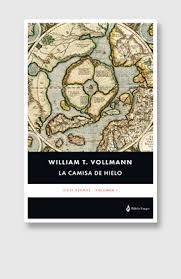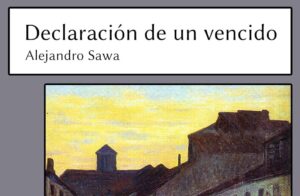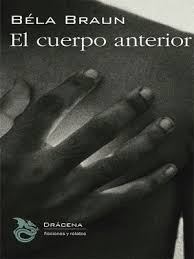
At this point, we should know that William T. Vollmann is a “peculiar” author. Therefore, no one should surprise that a historical novel (more or less) written by the Californian looks little to the vast majority of historical novels.
In the words of Vollmann himself, My goal in “Seven Dreams” It has been to create a symbolic history, or be, a story of Origen and Metamorphosis often false, compared to the real facts such as we know them, but whose inaccuracies only delve into the truth. Take already !!!!
First part of the septology Seven dreams on the clash between European and native American colonizers, The ice shirt It would be the “prehistory” of that colonization in the form of rewriting of Nordic sagas (do you know who loved Nordic sagas? Yes, Jorge Luis Borges, yes). In fact, practically half of the book is a long introduction, dotted with the occasional subsection that takes us to the 80s of the twentieth century, about legends, violence and tensions between different kings and characters of the most varied fur until reaching Erik El Red and its descendants.
This first half of the text resembles a collection of micro -stories in which, although connections are established, there is the impression of a certain lack of depth. Of course, there are truly magnificent stories (I love King Harald, who conquered all Norway as a love test), magical realism to helmet and a poetic of the most suggestive.
(…) that fearsome wind that, although they did not see that it was white, swept such snow against them that almost suffocated; Nor was it black, although there was such blackness inside that they saw the same with their eyes open as closed; He started the tips of the icebergs, detaching ice of ice and causing the manara snow to run through the slopes of the cliffs such as white and springing blood; And the sky broke down for every fissure that he found or opened until the ocean, despite being frozen, creak and restall, breaking against the waves of that other sea of wind
I find more interesting the second part of the novel, which puts the focus on Freydis, descendant of Erik the red that departs towards Vinland (current terranova, labrador, etc.), in the rivalry that is unleashed with other settlers and in the clash with the natives. Without neglecting that mythical element that runs through the entire text (prophecies, premonitory dreams, sorcerers …), I believe that the characters are shown in all their complexity, that the deepening of the relationships between them is greater, which is deepened in the reasons that move them, etc.
All this without forgetting those that I think are the main strong points of the text: description of landscapes, metaphors and symbols, in which fiction and non -fiction, myth and reality, history and “stories” are combined.
In summary, a complicated novel (yes, tetes, is Vollmann) that tells us about the present, now that a certain orange dye intends to appropriate Greenland, through the review of legends and myths of a past not as distant as we might seem.
PS: Beautiful edition of the pale fire. Typography, illustrations, cover, paper … a luxury, go.
Also from Vollmann in Ulad: the Royal Family and the Atlas
Source: https://unlibroaldia.blogspot.com/2025/04/william-t-vollmann-la-camisa-de-hielo.html


